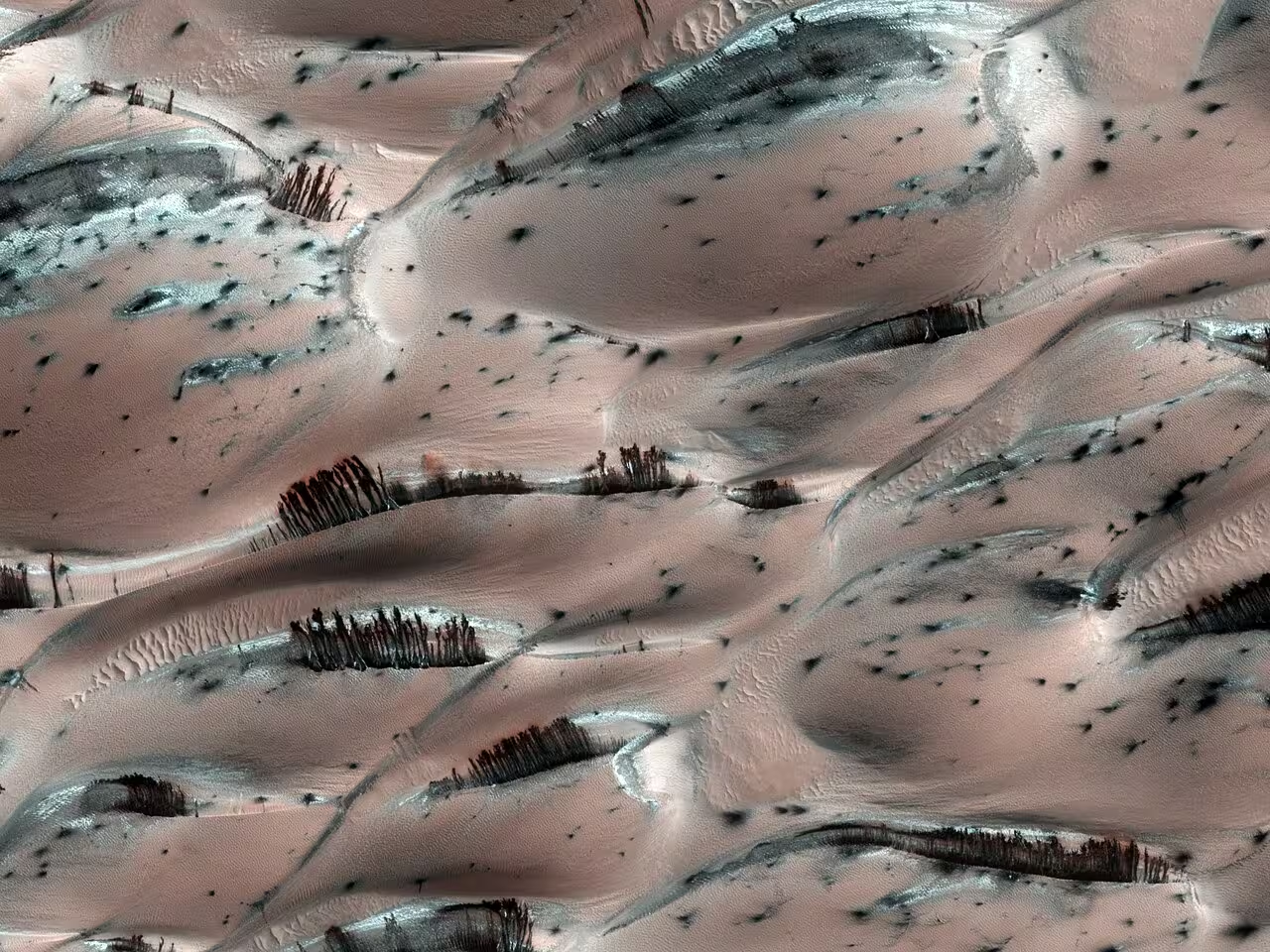An international research team has modeled the pressure level and composition of the atmosphere at which terrestrial trees could begin to grow on Mars. It turns out it’s much easier than you thought. But the first Martian forest may not grow where expected—far from the equator.
Now SpaceX is experimenting with a reusable carrier whose ultimate goal is to enable the colonization and habitation of Mars. Among SpaceX employees there are scientists who have already described the most technically simple and effective ways to make the fourth planet habitable (with the help of supergreenhouse gases). But this process is already slow and requires centuries. If
It is possible to raise the temperature of the Red Planet to the current Earth level immediately after reaching the required super-greenhouse gas concentrations in the Martian atmosphere, after which its saturation with oxygen will, in the optimal case, take centuries. Trees photosynthesize most efficiently in conditions of moisture deficiency: they require less water per unit biomass.
The problem is that Mars’ current gas shell is about 170 times rarer than Earth’s sea-level gas shell. On Earth, the pressure is the same at 35 kilometers and trees need a higher pressure for their vital activities. Therefore, scientists from the USA, Poland and Switzerland tried to calculate under what conditions trees could bloom on the fourth planet. It has its own consequences
Presented at the Astrobiology and the Future of Life conference held at the Lunar and Planetary Institute in Houston, USA, in October 2024.
Currently the pressure on the surface of Mars is 0.61 kilopascals. The report’s authors note that laboratory experiments have shown that terrestrial trees can grow at a pressure of 10 kilopascals, 16 times higher than modern Martians, but 10 times lower than modern terrestrials. They also need warmth. At the same time, about one percent (0.1 kilopascals) of this pressure must fall on oxygen, because at night higher terrestrial plants cannot exist without it.
Also read – Scientists have learned to calculate dangerous comets from meteor showers
The length of the growing season should not be less than 110 sols (local days, 24 hours 40 minutes) out of the 669 sols that make up the Martian year. During the growing period, minimum night temperatures should not fall below -6°C, average temperatures should not fall below +6°C, and maximum temperatures should not exceed +40°C.
Such conditions are achieved when the absorption of solar radiation by the Martian atmosphere is already 0.27 of one. This is quite real if a large amount of super-greenhouse gases actively enter there. At the same time, the simulation shows that the required temperature and atmospheric regime will be achieved for the first time in a somewhat unexpected place, in the Hellas valley.
It is a depression up to 2,300 kilometers in diameter and seven kilometers deep below the average altitude of the Martian surface. It is also located outside the tropics, the hottest part of the planet. Even now the atmospheric pressure at its base is 1.24 kilopascals, twice the standard Martian pressure. In summer, a light fog sometimes forms there, and in winter watery frosts constantly fall, making it clearly visible on the surface of the planet. Moreover, the pressure there is higher than the so-called triple point of water, meaning that while liquid water can exist on the surface, it will boil rapidly due to very low pressure on the rest of the planet’s surface. The required tree pressure parameters at the bottom of the plain will be reached twice as quickly as on the rest of the Martian surface.
The authors’ conclusions suggest, on the one hand, that the equator is not the best place for the first experimental leaky and unheated (and therefore cheap) greenhouses on the surface of Mars. On the other hand, we can add that radar studies of the fourth planet show that there are water ice deposits between 200 and 450 meters thick in the Hellas valley. That is, with the onset of terraforming, significant amounts of liquid water will be formed, which, together with precipitation, can trigger a local hydrological cycle.
Also read – The “extraterrestrial” signal sent for experiment in the USA was decoded
Remember that scientists use strong generalizations in their calculations. For example, for ease of calculation, the surface of Mars was divided into segments of 190 x 190 km. This allows us to evaluate the situation for large plains, but distorts the situation in terms of assessing suitability for trees in hilly terrain.
For example, the Mariner valleys reach a depth of 11 kilometers (the bottom of Melas Canyon). It is believed that an ultra-deep lake existed here in ancient times. The length of the canyon is 547 kilometers, but its width is much smaller, so its calculation did not reduce to the point of 190 x 190 kilometers. Considering that Melas is located at the 10th degree south latitude and that its lowest point, the bottom, is 4 kilometers lower than the Hellas Plain, the temperature and atmospheric conditions suitable for tree growth must have developed much earlier here. when the value of optical absorption by the atmosphere is 0.27 of the total absorption.
The increase in atmospheric pressure on the fourth planet should occur spontaneously, as the temperature in it increases. The fact is that a significant part of the local carbon dioxide is bound in dry ice at the poles, and a large amount of nitrogen is contained in perchlorates, which are rich in local soils. These perchlorates are stable only at very low temperatures and decompose as they grow, releasing nitrogen.
It should be noted that raising the oxygen pressure on Mars to 0.1 kilopascals is a separate and rather complex task that could be aided by other terrestrial photosynthetic organisms that Naked Science has previously written about. Unlike trees, they can currently survive Martian conditions, although in a very limited number of places (according to laboratory experiments).













